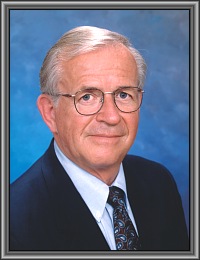This weekend my daughter and second son will be competing in the National School Aerobics Championships on the Gold Coast. This will be the third year in a row that my daughter has participated in the championships and the first time for my son.
 While my daughter is in Year 6, my son is in Year 4. He is the only Year 4 in the team and the only male which is a terrific achievement.
While my daughter is in Year 6, my son is in Year 4. He is the only Year 4 in the team and the only male which is a terrific achievement.
His involvement in the school aerobics team is part of the ripple effect of my daughter Sienna making the impossible possible back in 2012.
In 2011 Sienna was in Year 3 and competed for the first time in her schools aerobics team. Sienna was in the school’s third ranked team. They did very well for a team of first timers but didn’t make the State Championships. The school’s number one ranked team not only won the State Championship but also went on to win the National Championship later that year. All the girls in that team were in Year 6.
As a result of winning the National Championship, and despite the fact that all the girls who had participated in the team had graduated and moved on to high school, all the school’s aerobics team were promoted to a higher division for the 2012 season.
While having our family dinner during the first week of school for 2012, Sienna said, “Dad, I’d love to be in the top team for aerobics this year, but it’s impossible!”.
“Why is it impossible?”, I asked.
“Well, last year I was in the bottom ranked team and we didn’t even make the state finals. Because our top ranked team won the National Championships last year our whole school was promoted up a level. Plus, only Year Six girls were in the team last year and I’m only in Year Four. So Dad, as I said, it’s impossible!”
“Okay”, I pondered, “When are your trials for the aerobics squads?”
“March.” Sienna replied.
We worked out that Sienna had six weeks between the conversation we were having and the date of the trials.
“Sienna, let’s assume that it was possible for you to make the top ranked team this year. I know that it might be difficult, but let’s just pretend for a moment that it is possible. What do you think you would have to do to make the team?” I asked.
“Well, I’d need to practice.” She replied.
“How much practice would you need to do?” I inquired.
“Probably every day”. (A good response!).
“Okay, how long do you think you would need to practice?” I continued to probe.
“Hmmm, maybe ten minutes?” (A great response from a nine-year old girl).
“That sounds great. Ten minutes for every day equals seventy minutes of practice per week. What else do you think you could do?”
“Maybe I could ask my teachers what sort of practice I should be doing?” Sienna suggested.
“Excellent, that is a great idea. That way you’ll get the best value from your practice. Will you agree to do what you said you will do, at least that way you will give yourself a chance to make the top team.” I said.
“Okay Dad, it’s a deal!” Sienna exclaimed.
To Sienna’s credit she went and did what she said she would do. She asked her teachers what she should be practicing on and then she went and recruited two of her friends who had participated the previous year (they had also been in the third ranked team) to practice with her at recess and lunchtime. In reality she spent much more than ten minutes practicing each day, but it seemed more like fun than practice so she didn’t notice the ‘extra‘ work she was doing.
In addition, what do you think happened when the teachers who were responsible for the team did when they were on yard duty? Yes, they came over and provided more coaching. This is called the Law of Attraction. Sienna’s teachers who were passionate about their teams couldn’t help but be attracted to the area of the playground where the girls were practicing.
What do you think the Year Six girls were doing during this period? Were they training? No.
When the trials eventually came in March what do you think happened?
Not only did Sienna make the top ranked team, but so did her two friends!
The impossible had become possible!
What a wonderful life lesson!
Despite having three of the team being in Year Four, the seven member squad became State Champions. They then went on to win a Silver Medal at the National Championships and they were the only team that included girls outside of Year Six.
If Sienna had not been able to challenge her own mindset about what was possible, she never would have given herself a chance to make the impossible possible.
There are no guarantees in life, but the willingness to focus on what you want to achieve, coupled by the desire to find out what work is required and to then go and do that work at least gives the impossible a chance to come true.
Sienna’s National Silver medal was a bonus. In my eyes she was a winner the minute she started to put her promise into action and started training.
How often do you let your view of the impossible stop you from giving yourself a chance to make whatever you want to have happen become possible?
Focus on what you want to achieve, do your research and work out what you need to do to make it happen, and then go out and do it. At least you’ll be giving yourself a chance.
Sienna’s success encouraged her younger brother to get involved in school aerobics. Due to his big sister’s experience he knew that it wasn’t impossible for him to make the top team. The ripple effect of Sienna’s willingness to maintain focus and to do the work required to create success is now into its third year. Irrespective of where the team places in the National Championships, the life lessons that they are learning highlights that they are already winners.
Gary Ryan enables organisations, leaders and talented professionals to move Beyond Being Good.


 While my daughter is in Year 6, my son is in Year 4. He is the only Year 4 in the team and the only male which is a terrific achievement.
While my daughter is in Year 6, my son is in Year 4. He is the only Year 4 in the team and the only male which is a terrific achievement.
